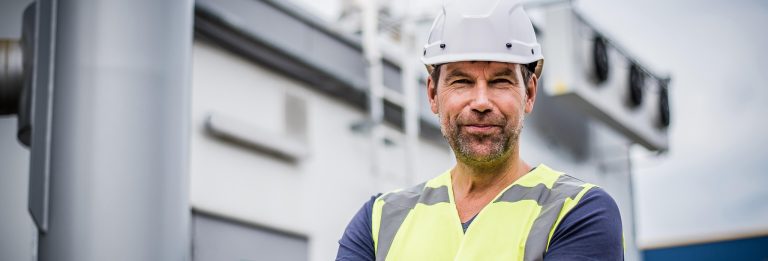Author: Alexander Vasilchenko

How to optimize your first-time-fix rate
Find out what the first-time-fix rate is and how you can improve it for more customer satisfaction and sales.
How often do your service technicians solve customers’ problems on the first attempt? Find out what the first-time-fix rate is and how you can increase your first-time fix rate. for more customer satisfaction and sales.
What is the first-time fix rate?
The first-time fix rate (FTFR) is a percentage of how often service technicians are able to solve a problem on the first attempt. The FTFR therefore describes the percentage of customer problems that are resolved on the first visit without the need for additional visits or follow-up. This makes the first-time fix rate one of the decisive KPIs (key performance indicators) in industries where on-site or remote technical support is frequently required, such as telecommunications, mechanical engineering or IT. A high first-time fix rate indicates that your service technicians are well prepared and have the necessary resources and information to solve problems quickly. A high first-time fix rate not only means more efficient troubleshooting, but also satisfied customers, lower operating costs and ultimately higher sales.

How is the first-time-fix-rate calculated?
Once you have the necessary data, calculating the first-time-fix-rate is quite easy. The FTFR formula is
First-time-fix-rate = total number of orders completed on the first visit / total number of completed orders
So let’s assume that 85 out of 100 processed orders are solved on the first visit, then your first-time-fix rate is 85%.
What is a "good" first-time fix rate?
A good first-time fix rate is usually between 70% and 90%, depending on the industry and the specific service requirements. In highly specialized technical areas such as telecommunications or mechanical engineering, an FTFR of 85% or higher is already considered excellent, as this indicates that most problems are solved efficiently on the first attempt.
Why FTFR is important in service
When companies improve FTFR in service, they not only benefit from more efficient operations, but also from significantly higher customer satisfaction. After all, customers today expect nothing less than fast and efficient service. And a technician who solves a problem immediately creates trust and strengthens customer loyalty. At the same time, the company saves costs as additional visits are avoided. A high first-time fix rate also allows you to make better use of your service resources. This is because technicians who solve problems on the first visit can move on to the next job more quickly and therefore complete more jobs in less time. This leads to better capacity utilization and increases sales and earnings because you can generate more service revenue with the same personnel costs.
Advantages of a high first-time fix rate at a glance:
What are the reasons for a low first-time fix rate?
One common reason is inadequate preparation on the part of service technicians: if they are not equipped with the right tools and complete information, they cannot fix the problem efficiently on site. Delays and increased costs are the result of inadequate preparation. Another key factor is the lack of the right spare parts: Technicians who do not have the necessary parts may have to postpone the problem, prolonging the process and affecting customer satisfaction. Inaccurate fault diagnosis also plays a role: if the description of the problem is incomplete or inaccurate, the technician may not have the right equipment or the necessary qualifications. Finally, a lack of communication between dispatchers, technicians and customers can also have a negative impact on the first-time-fix rate. Misunderstandings and a lack of coordination can lead to technicians not being optimally prepared, which in turn causes delays and makes additional assignments necessary.

7 approaches to improve the first-time-fix rate
Well-trained dispatchers can make the right choice of technician and ensure that all the necessary information and materials are available. What qualifications are required, which technician already has experience with this type of fault and the technical object? Which spare parts have often been needed in the past to solve this type of problem?
Specialized field service management software can help to plan assignments efficiently and provide technicians with relevant information and resources. It can provide dispatchers with suggestions on estimated repair times, suitable qualifications and spare parts frequently required in the past.
Effective spare parts management is the key to improving the first-time-fix rate in service. If technicians always have the right spare parts with them, many problems can be solved directly on site. The use of AI can help to predict the most frequently required spare parts for each technician and their area.
With mobile solutions, technicians can access order details and customer information in real time. The history of a system or component is also available: what errors have occurred in the past and how were they resolved? How is the specific technical object configured, what does the parts list look like and how is it parameterized?
Access to a central knowledge database helps technicians to access previous cases and find solutions quickly. AI can help to navigate through large amounts of data to the desired information in the form of natural language.
Experts who support technicians on site, e.g. through industrial augmented reality, can help remotely in difficult cases, bringing decades of experience to the scene of the incident without the experts having to travel around the world.
Predictive maintenance means that problems can often be identified and rectified before they even occur. Predictive models can be predicted on the basis of past malfunction events and correlating measured values and status changes.
How can the first-time fix rate be measured and tracked?
Field service management systems often offer functions for automatically calculating and tracking the first-time fix rate. This allows companies to regularly analyze the results and develop strategies to sustainably improve the first-time fix rate. It is important that the FTFR is not viewed in isolation. It should always be assessed in conjunction with other important KPIs such as customer satisfaction, average processing time and total costs per order.
Improve your first-time fix rate
As you can see: The first-time-fix-rate is a key performance indicator that provides information about the efficiency and effectiveness of your service and maintenance area. A high FTFR can not only lead to more satisfied customers, but also to a more efficient use of resources and lower operating costs. Companies that are serious about improving their first-time fix rate should optimize their scheduling, introduce efficient spare parts management and integrate technologies such as field management software, mobile software solutions and remote support into their service process.




